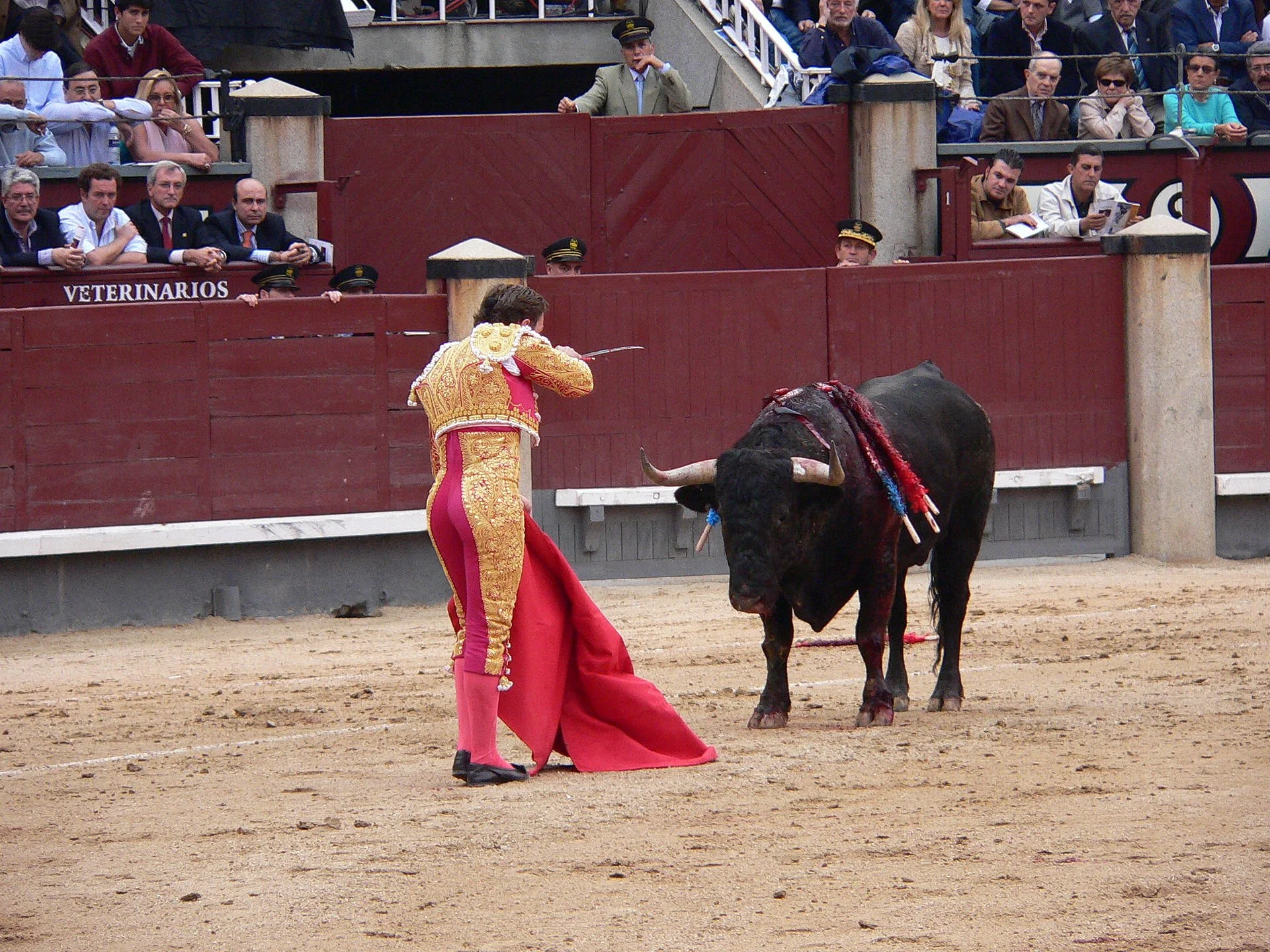Not Taking The Bull By The Horns: Pope Leo Spurns Pleas To Condemn Bloody Pastime
Bullfighting has been a tradition in Spain for some 1,300 years. (Wikipedia Commons photo)
ROME — Ignoring pleas from animal rights advocates to denounce bullfighting and its close ties with Spanish Catholicism, Pope Leo XIV is aligning himself with the European country’s bishops, who remain hesitant to condemn the cruelty of the popular bloodsport.
Leading animal rights groups, who have reiterated their calls for the pope to delink Catholicism from bullfighting, are disappointed by his reluctance to address an issue of ecological justice, despite his theological emphasis on care for creation following Pope Francis’s lead.
Mimi Bekhechi, Vice President for Europe of People for the Ethical Treatment of Animals, told Religion Unplugged that they were renewing their plea “to Pope Leo to recognize that there is something fundamentally un-Christian in having the Church’s name used to torture animals in an unjust bloodsport.”
READ: Tackling Africa’s Wildlife Crimes From The Religious Front
Bekhechi described the torture as “one in which the bull literally fights for his life, having done nothing to cause anyone to attack him, let alone a priest,” noting that clergy are “in the audience and sometimes in the bullring.”
“We asked Pope Leo to do what Pope Francis never got around to doing — although we are certain he would have acted favorably to our plea, as he often spoke of respecting animal life, God’s creation,” she added.
Elisabetta Scuri, Italy’s spokesperson for Humane World for Animals, said she believed that “Pope Leo XIV, sovereign of the Vatican City State and leader of the Catholic Church, has the power to inspire change by taking a clear stance against these cruel practices, which are too often justified in the name of religion and tradition.”
“These outdated spectacles perpetuate the idea that injuring and killing an animal for amusement is acceptable, standing in stark contrast to the words of Pope Francis: ‘Every act of cruelty towards any creature is contrary to human dignity,’” Scuri said.
The animal rights advocates emphasized the cruelty of the bloodsport.
“These bulls suffer almost beyond imagination: they are stabbed until they bleed out, their spinal cords severed, or they drown in their own blood,” the PETA spokesperson said. “It is blasphemy to do this in the name of a saint.”
Animal rights groups are reminding Leo of the historic decree De Salute Gregis Dominici, promulgated by his predecessor Pope Pius V on Nov. 1, 1567, which automatically excommunicated anyone who supported or attended a bullfight. Bullfighting in Spain dates back to the year 700.
The edict, which denounced bullfights as constituting “cruel and base spectacles of the devil and not of man,” also denied burial to those who died fighting bulls.
According to the Routledge Handbook of Religion and Animal Ethics, while Pius’s decree was never repealed, King Philip II, deferring to the pro-bullfighting Spanish nobility, did not allow the decree’s publication, rendering it largely ineffectual.
Neither the Holy See Press Office nor the Spanish Episcopal Conference replied to a request for comment.
Spanish Bishops silent on bullfighting
The Spanish Episcopal Conference, known for “its penchant for meddling in political affairs” and outspoken on other issues of social justice, “has opted to keep silent” on the issue of bullfighting, Margarita Carretero-González, an academic, wrote in the Routledge Handbook.
The bishops “have failed to listen to the petitions of Catholic animal defenders who simply ask it to disapprove publicly of having animals tortured to death in religious festivities,” she laments, explaining that “the Catholic Church in Spain seems to be mysteriously bent on a subtle crusade to equate animal rights activists with pro-abortionists.”
Activists have pointed out the inextricable links between popular Spanish Catholicism and bullfighting. A notable example cited is the Toro de la Vega (Bull of the Meadow) tournament, in which a bull is chased and lanced to death, which is part of the festivities in honor of the Virgen de la Peña (Virgin of the Rock).
The bullfights are held during Catholic festivals, there are religious images embroidered on the bullfighters’ capes, the fighters wear Catholic medallions, visit the chapel on the premises of the bullring, and make the sign of the cross before entering the ring. Priests often bless the spectacles, and books are published on the special relationship between God and bullfighters.
“In addition, hundreds of local festivals involving the torment and killing of thousands more bulls take place across Spain and other countries each year,” Scuri confirmed, noting that countries like Italy had banned bullfighting, but approximately 180,000 bulls are killed in bullfights every year in Spain, France, Portugal, Venezuela, and beyond.
This past July, PETA and AnimaNaturalis, a Spanish animal rights organization, staged an anti-bullfighting protest outside Pamplona's City Hall, performing a reconstruction of Michelangelo’s Pieta.
The costume drama depicted the Virgin Mary cradling in her arms an activist embodying a fallen bull. Surrounding them, dozens of lightly-dressed people with horns and blood-stained bodies formed a circle of fallen bulls, exposing the cruelty of bullfights organized in conjunction with the festival of Saint Fermin, the patron saint of Navarre.
According to the 2025 BBVA Foundation study, roughly seven in ten Spaniards (77%) want bullfighting to be abolished, with disapproval strongest among the youth and university-educated.
Spain’s Ministry of Culture data shows that only 5.8% of citizens have ever attended a bullfight. In 2024, Spain abolished the national award for bullfighting.
Jules Gomes has a doctorate in biblical studies from the University of Cambridge. Currently a Vatican-accredited journalist based in Rome, he is the author of five books and several academic articles. Gomes lectured at Catholic and Protestant seminaries and universities and was canon theologian and artistic director at Liverpool Cathedral.

